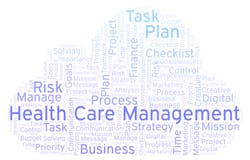On Wednesday, July 1, Natalie Trebes, a senior researcher at Advisory Board, Washington, D.C. (a division of the Minneapolis-based Optum) presented a webinar entitled “How COVID-19 Is Shaping Future Payer Coverage Options.” Trebes leads the health plan research team at Advisory Board.
As Trebes explained to her webinar audience, “We focus on working with health plan executives, to talk about their different strategic challenges, and really focus on growth across all business lines, provider relationships and management, and the customer experience. “Where are we at as an industry? It’s stating the obvious for everyone that COVID has been a defining moment for everyone across the U.S. And much remains disrupted and is unfolding in terms of purchaser decisions. Per the economic crisis, she said, “we are still very much above normal unemployment, when adjusted for seasonality. That very much means a shift in enrollment due to personal finances. We recently conducted a consumer survey in April, asking consumers what they’re looking for in their health plans.”
Looking at the data, Trebes said, “First of all, she noted, 29 percent of those consumers surveyed had lost some wages because of COVID-19 or social distancing. Among those, 28 percent had lost all their wages; 10 percent had lost three-quarters of their wages; 18 percent had lost half of their wages; and 44 percent had lost one-quarter of their wages. We’ve modeled where employer-based insurance will be trending. And there certainly will be some markets more affected than others.” But Medicaid is absorbing a huge shift, because of unemployment “This is a massive, jarring shift.”
What do health plan members want, within the health insurance products they have? Fully 58 percent said that they want their health plan to “cover all of my COVID-19 testing and treatment costs”; 38 percent want their health plan to “tell me where to go for COVID-19 testing and treatment”; 29 percent said they want their health plan to “help me get a doctor’s appointment quickly and safely”; 21 percent said they want their plan to “teach me how to protect myself from COVID-19”; 16 percent said they want their health plan to “help me not spread COVID-19 to others”; 13 percent said they want their health plan to “help me cope with isolation”; and 11 percent said they want their plan to “help me with my unemployment/income loss.”
“What was interesting to us, as we dug into this, was the degree to which consumers wanted their health plans to help them to access care and obtain guidance on how to use care,” she said.
What are some of the key “ecosystem changes” impacting payer strategy? They’re having to adapt to shifts in enrollment, as well as think about pricing and plan design. Trebes said. Then, she led an audience poll. “What is your plan’s top product priority for the second half of 2020?” she asked the audience. The results: 33 percent of the audience said, “addressing new or exacerbated member needs”; 27 percent said, “tailoring benefit design and customer service for purchasers”; 21 percent said “attracting or retaining current members and purchasers”; 12 percent said “aligning product design with local provider strategy”; and 6 percent said “managing an influx of new members.”
What about Medicaid?
What about Medicaid? Trebes noted that state governments have to balance their budgets, unlike the federal government. “And so when we look at what states have done in relation to past recessions, in 2008, states were in the tricky position of having more enrollment in Medicaid and lower tax revenues. So we expect that some of the shift will come from eligibility policies; they can tinker with some of their eligibility practices, and can make it more difficult for people to stay in Medicaid…. But in the near term, provider rate cuts will be a major factor, meaning that providers will be in an even tighter spot, which will translate into more difficult negotiations in other lines of business, as providers try to stay financially whole.”
Trebes said that three areas that she and her team will be focusing on in more depth in the coming months will be member communication, including onboard and helping members to navigate the system; network access, and addressing the social determinants of health, meaning both supporting community SDOH initiatives and prioritizing plan investments in social support.
“Turning to the individual marketplace, something that really grabbed our attention was the slowdown of states’ moves towards offering public options at the state level,” Trebes said. “Several states were researching this, and Colorado and Washington were starting to move forward, and Colorado has tabled that for now. Meanwhile, many expected many more individuals moving into individual health plans as they lost jobs. There has been a lack of awareness of options,” she noted. And, “While we are now expecting to see more competition in individual insurance markets, we don’t expect that to be fundamentally influenced by COVID-19. In general, this market will not change as much as we had thought.”
Meanwhile, Trebes shared some fascinating statistics regarding employers’ likely benefit changes. “Two-thirds of benefits executives in 2009 planned to require employees to share a greater percentage of health coverage costs. But the world has changed. Partly because of a reduction in elective care, most employers are seeing lower overall costs. There’s also concern about bad optics in terms of cutting employee benefits during a recession. Also, employers have already done a lot in this area. So we’re not expecting to see a lot of new actions on the part of employers.” Instead, quoting Mercer’s Global Survey #5 from June 2020, she noted that that survey found that 44 percent of employer respondents weren’t planning on making any health program changes in 2021, while 31 percent were planning to add, expand, or incentivize virtual care, telemedicine, and/or remote or online digital care. Meanwhile, only 19 percent were planning to change plans or plan design to share more costs with employees.
In addition, Trebes noted that “Two decades ago, the majority of consumers were looking at coverage as a key element in selecting a plan; now, that has flipped, with employees not wanting to accept additional costs in their health insurance coverage. So we think that that leads to health plans navigating members to lower-cost sites of care, to more effective condition management, to higher-performing providers. There’s a lot of getting into the details of which specific providers will look most efficient and highest-quality. So an emerging theme that we’re seeing is employers are asking plans to make an investment into higher-touch member navigation support services, whether that is a dedicated team of customer services representatives, or a new test vendor that offers benefits in more easy-to-understand fashion and brings in customized data for that member. And underneath, there are these softer patient-steerage methods, whether that is clearer price incentives of what is preferable utilization, whether it’s narrowing networks and getting into starting points for members that are easier for them to start with a preferred option, and get referred appropriately for follow-up care. There are a lot options there; I think we’re going to see a lot of innovation, but we’re going to see a lot of hand-holding for employees, rather than dumping the entire financial burden on them.”
Further, she said, “It will be really interesting to see how that converges with the new-found interest in telehealth across all constituencies—employees, employers, health plans. That has an interesting overlay with benefits design, where we’re starting to see health plans offering products that start with virtual care as a first stop for all employee needs, with employees get routed out as appropriate. That may be a game-changer in terms of virtual care and control of the benefits changes that take place.”
She noted that her team’s research has found that 76 percent of consumers are highly or moderately likely to use telehealth in the future; and that 64 percent of providers are more comfortable using telehealth now, than prior to the COVID-19 pandemic.
Trebes also he noted that the Medicare Advantage space “looks a little different from all of the rest” of these spaces. “We expect to continue to see MA growth over the next decade, and it is largely insulated from enrollment shocks.” Among the elements involved: increased financial pressure on seniors, increased demand for home-based care.
And she noted that market share continues to shift towards the very largest MA plans—the top five MA plans have gone from 57 percent of national market share to 68 percent in the past five years. In the case of Medicaid managed care, that shift has gone from 38 to 50 percent. In other words, consolidation should be expected to continue forward.
Trebes also noted that health plans continue to face major social determinants issues, including loneliness, isolation, and behavioral health concerns.


